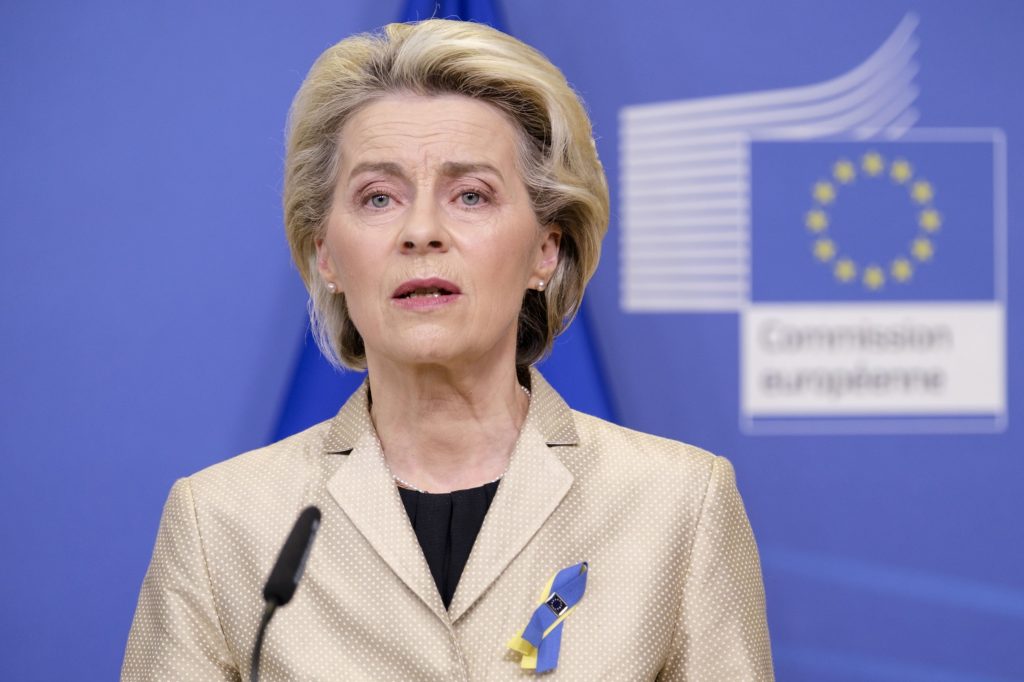The US and the European Union are still struggling to agree on specific ways to slow China’s technological rise and limit its coercive trade practices even as both have signed onto the strategic need to “de-risk” their relationships with Beijing.
Senior US officials had wanted the EU to agree this week to jointly pursue a new mechanism to screen outbound investments to places like China. Instead, the two sides emerged from a high-level trade meeting in northern Sweden with a joint document that largely avoids mentioning Beijing.
“We start from exactly the same approach, which is that none of us are looking for confrontation,” US Secretary of State Antony Blinken said at a joint news conference. “None of us are looking for a cold war.”
Productive dialogue
Overall, the US-EU relationship is operating more smoothly these days, but neither side got exactly what it wanted when three US cabinet secretaries met senior EU officials Wednesday in Lulea, Sweden, for the biannual US-EU Trade and Technology Council (TCC).
The US didn’t get more ambition from Brussels on mechanisms to limit China’s technological development, while the EU had wanted Washington to move faster on developing common standards for clean-tech sectors and other trade facilitation measures.
US Commerce Secretary Gina Raimondo said Wednesday after the meeting in Sweden they were “among the most productive and richest conversations” the partners have had. The two sides agreed on several specific plans, including a common international standard for megawatt charging stations for electric heavy trucks and to explore possible international standards for generative artificial intelligence systems.
China in focus
Even if the EU managed to avoid singling out China in the formal conclusions of the meeting, the country was the backdrop in much of the private discussions, whether the topic was the overcapacity Beijing is fuelling through its subsidies on steel or possibly in older generation of chips, or coercive economic practices, according to sources familiar with the talks.
US officials have openly adopted the approach toward China that European Commission President Ursula von der Leyen laid out last month, echoing her language about “de-risking” but not “de-coupling” from China.
Blinken told reporters on Tuesday that her speech “could very much have been an expression of our own policy,” and he echoed the de-risking, de-coupling language again on Wednesday.
The EU is due to complete its own risk assessment next month about the some of the challenges posed by China’s rise as part of a new economic security strategy to identify what kind of mechanisms may be needed to address those risks.
And Commission Vice President Valdis Dombrovskis said Wednesday without specifically naming China that the EU needs to be “more efficient in our response” to economic coercion by non-market economies.
Even if EU officials are cautious in their public remarks, Europe’s views on China are clearly shifting, particularly in the wake of Russia’s invasion of Ukraine.
“I think the US has been a few years ahead of Europe, but I think very many countries now realise this is not the time for naivete,” Swedish Prime Minister Ulf Kristersson said Tuesday, standing next to Blinken. “I think there is a beginning convergence going on, which I would appreciate very, very much.”
A more elegant approach
The EU has long had a different – and some Europeans would argue a more elegant — approach to addressing China that does not point the finger at Beijing. Officials involved in the drafting of the TTC conclusions said numerous EU countries were adamantly against naming and shaming China in earlier drafts. Still, they noted, the substance of the agreement clearly still describes the non-market economy practices raised by the US.
“To be pragmatic and realistic, I think where we have the best possible outcome is not necessarily going head to head in all of these issues, but also putting equally much power and time into the long end game — not making the same mistake of being five to 15 years behind China on a lot of these critical and crucial issues,” Ebba Busch, Sweden’s deputy prime minister, told reporters.
The EU’s tactic of not pointing fingers at China has had mixed results.
While the US specifically banned technology from China’s Huawei Technologies Co. in its telecom infrastructure, the EU proposed a vaguer 5G toolbox that emphasised getting rid of so-called high-risk vendors.
Years later, countries like Germany are still grappling with vast amounts of Huawei products in their systems.
Internal Market Commissioner Thierry Breton defended the EU’s past approach with the 5G toolbox.
“Today, yes, we have of course some high-risk suppliers but we know tomorrow we may have others,” he said. “It’s important to have general rules — principle based. China is a part of it but we are always thinking at large.”
It’s unclear whether the EU will be willing to call out China by name in either its forthcoming risk assessment or economic strategy. EU countries like France and Germany have specifically raised issues about simply adopting the US’ hawkish approach to China, especially due to their economic ties with China, the sources said.
© 2023 Bloomberg

